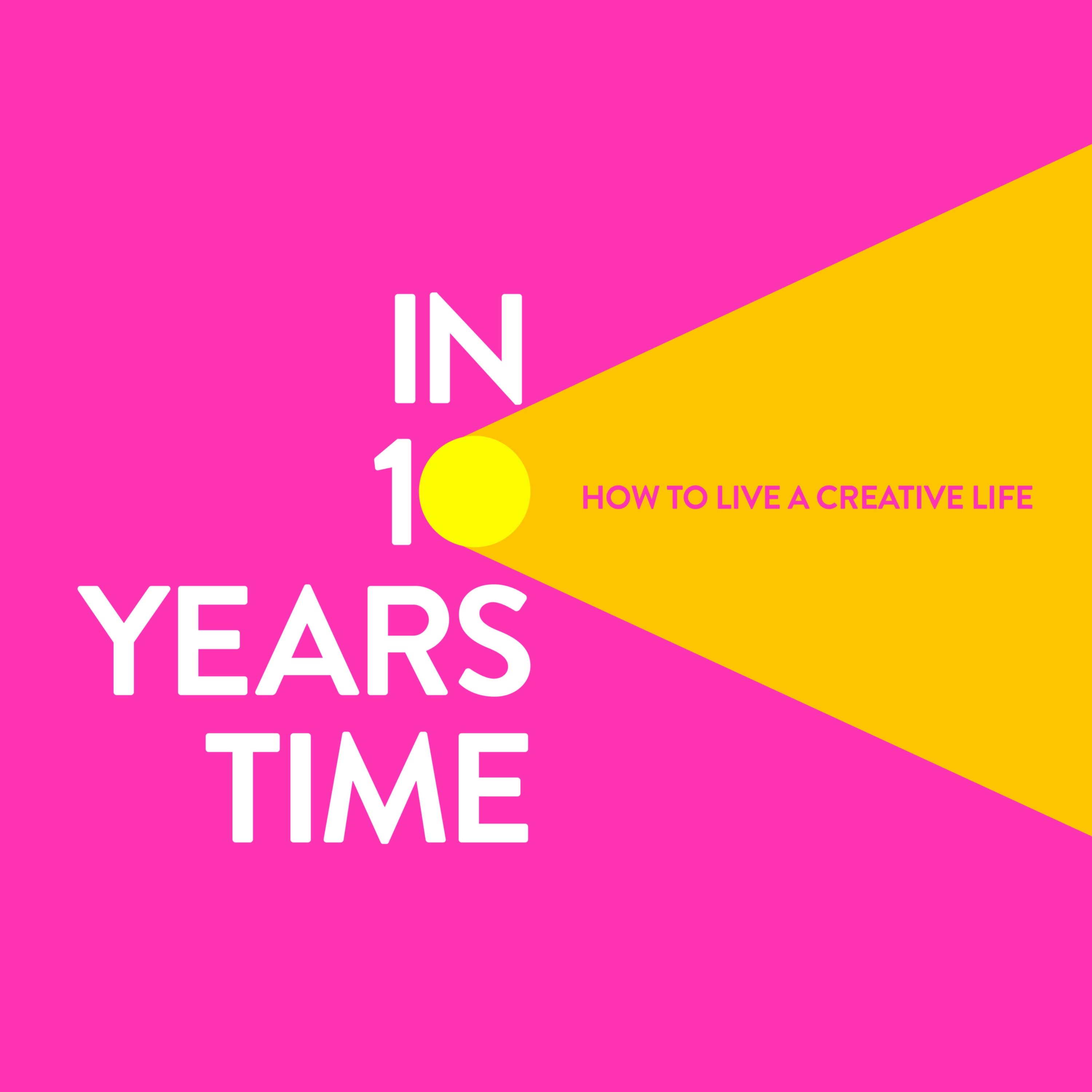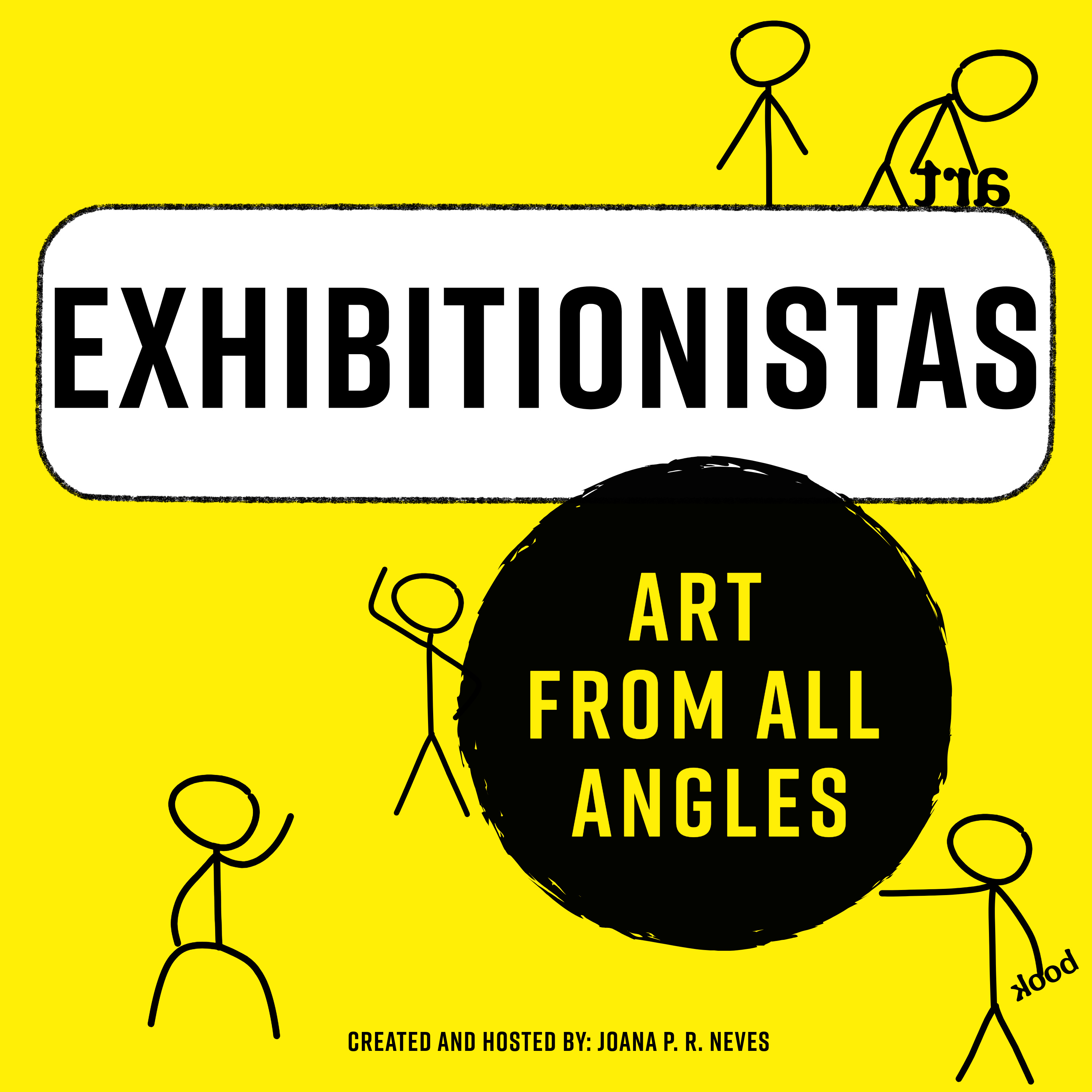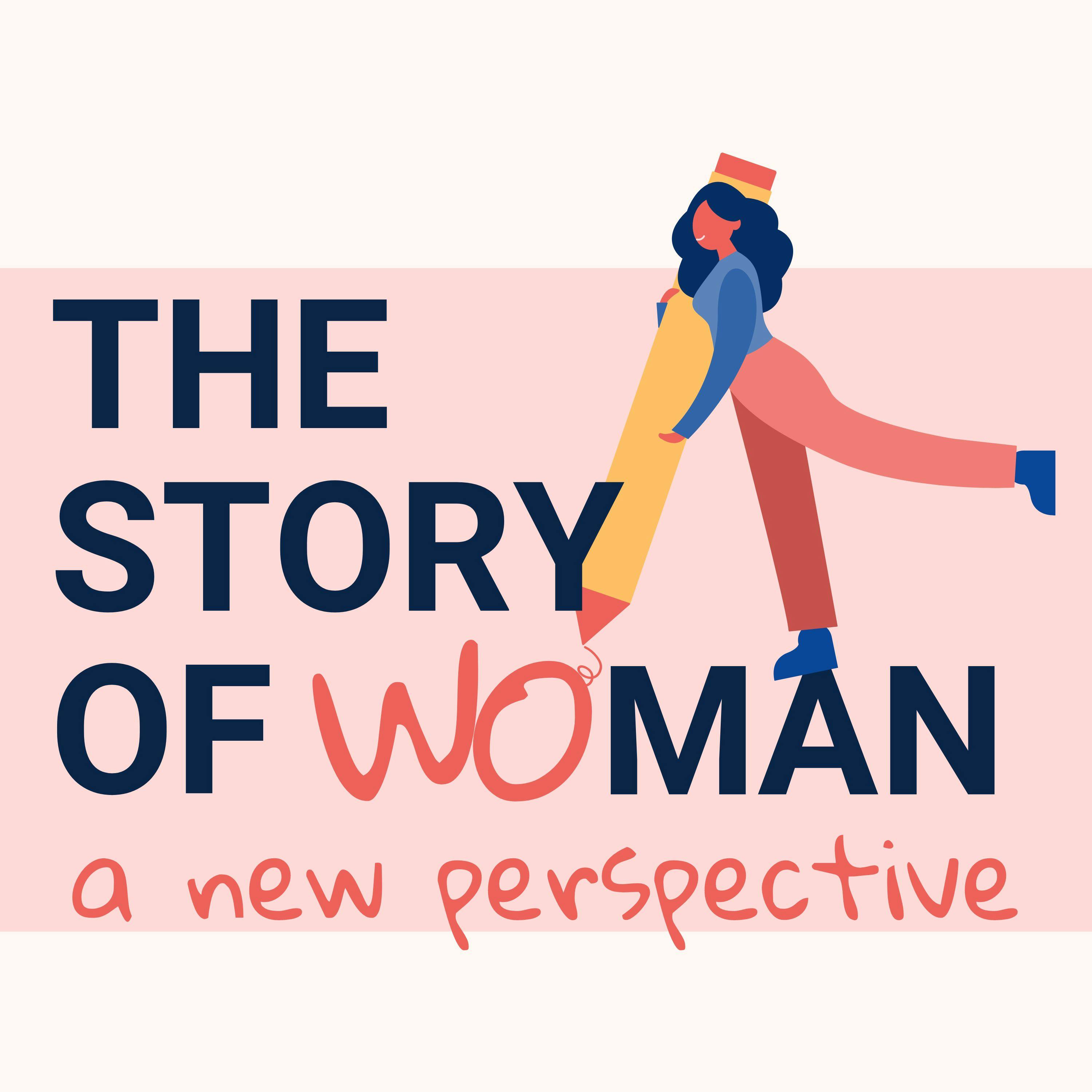
Creativity Found: Finding Creativity Later in Life
Real-life stories of finding or returning to creativity in adulthood.
I'm Claire, and I re-found my creativity after a time of almost crippling anxiety. Now I share the stories of other people who have found or re-found their creativity as adults, and hopefully inspire many more grown-ups to get creative.
I chat with my guests about their childhood experiences of creativity and the arts, how they came to the creative practices they now love, the barriers they had to overcome to start their creative re-awakening, and how what they do now benefits their physical, mental and emotional wellbeing.
Want to be a guest on Creativity Found? Send me a message on PodMatch, here
Creativity Found: Finding Creativity Later in Life
Juliet Sargeant – from medical practice to Chelsea Flower Show
Juliet Sargeant was an academic child who loved the sciences, and at a young age decided she wanted to be a doctor, and in particular a psychiatrist. She successfully studied and practised medicine, and was on the cusp of specializing, when she took a break to try something different, just for a few years. So how is it that nowadays you can hear her giving advice on the BBC Radio show Gardener’s Question Time rather than giving medical advice to patients?
In this episode we find out the difference between gardening and garden design, how Juliet won Gold and People’s Choice at RHS Chelsea Flower Show in 2015, and what she has planned – in conjunction with BBC hit children’s TV show Blue Peter – for Chelsea 2022 and beyond.
CreativityFound.co.uk
Sussex Garden School at creativityfound.co.uk
Instagram: @creativityfoundpodcast
Facebook: @creativityfoundpodcast and Creativity Found group
Pinterest: @creativityfound
Researched, edited and produced by Claire Waite Brown
Music: Day Trips by Ketsa Undercover / Ketsa Creative Commons License Free Music Archive - Ketsa - Day Trips
Artworks: Emily Portnoi emilyportnoi.co.uk
Photo: Ella Pallet
Affordably advertise on this podcast by emailing claire@creativityfound.co.uk, or book a call here.
I would love some financial support to help me to keep making this podcast. Visit buymeacoffee.com/creativityfound
Want to be a guest on Creativity Found? Send me a message on PodMatch, here
Podcast recorded with Riverside and hosted by Buzzsprout
You can find out more about Juliette Sargent's Sussex Garden School on the Creativity Found website. Simply visit creativityfoundcouk. Slash Sussex Garden School.
Speaker 2:I was fairly academic at school, so I think in those days it was just accepted that I would be, you know, a teacher, a lawyer, a nurse, a doctor, something like that. At the end of senior house jobs I did what's called the MRCP, which is the sort of higher medical exams, and the idea of that is it's the sort of gateway to specialising. So I was then at that point supposed to go on and do psychiatry, but I'd sort of slightly lost the will at that point. I didn't actually understand what a garden designer was. When I went on the course I thought that I was going on a gardening course and again, I think that's often people confuse the two.
Speaker 2:We fancy doing a Chelsea Garden. Would you design it for us? Of course I said, yeah, it's a lot of work, isn't it? For me it was a complete journey of understanding and discovery about this awful topic Landscape, and the way that landscape inspires all sorts of creativity Poetry, painting, pottery, stained glass. You know, if you look at creative people, so often they are inspired by nature and the landscape.
Speaker 1:Hi, I'm Claire, founder of Creativity Found, a community for creative learners and educators, connecting adults who want to find a creative outlet with the artists and crafters who can help them do so with workshops, courses, online events and kits. For this podcast, I chat with people who have found or re-found their creativity as adults. We'll explore their childhood experiences of the arts, discuss how they came to the artistic practices they now love and consider the barriers they may have experienced between the two. We'll also explore what it is that people value and gain from their new found artistic pursuits and how their creative lives enrich their practical, necessary everyday lives. Juliet Sargent was an academic child who loved the sciences and, at a young age, decided she wanted to be a doctor and, in particular, a psychiatrist. She successfully studied and practiced medicine and was on the cusp of specialising when she took a break to try something new just for a few years.
Speaker 1:So how is it that nowadays you can hear her given advice on gardener's question time, a UK radio show for our worldwide listeners, rather than giving medical advice to patients? Let's find out. Hi Juliet, how are you? Hello Claire, I'm very, very well, thank you Good okay, please start by telling us through what discipline you have been able to channel your creativity.
Speaker 2:Oh, I work as a garden designer and I'm based in Sussex mainly so it's through garden design, creating outdoor spaces for people. How exciting.
Speaker 1:Did you have a creative upbringing at home in your education?
Speaker 2:No, I didn't have a creative upbringing really. I was fairly academic at school. So I think in those days it was just accepted that I would be, you know, a teacher, a lawyer, a nurse, a doctor, something like that, and I was fairly sciency at school. So I just sort of chugged along with that, like many people. But I did love art, I always loved art, and I was quite disappointed when it came to choosing my own levels. I needed to drop something and that was where I dropped any kind of creative subject really and really focused on the sciences. But when I think back at home, my mum brought us up on her own, so she was sort of just busy trying to survive, I think. But I have since discovered that she actually is very creative. She's a botanical painter. So I think, even though it wasn't expressed in my childhood, I think there was that creativity there.
Speaker 1:And there's a botanical connection as well.
Speaker 2:Yes, there is. Yes, yeah, my mum just loves plants, but she's a real details person, which I'm not quite such a detailed person.
Speaker 1:Okay, you went to medical school and you practised medicine. What was that life like?
Speaker 2:I loved medicine. In fact, I decided when I was about seven that I wanted to be a doctor. I wanted to be a psychiatrist and I really, really loved the practice of medicine. I loved that every person that comes to you is so completely different their circumstances, their illness, the way they respond. I just loved it. But being an NHS doctor in the early 90s was fairly gruelling and I decided that I wanted to do something less stressful. Although at times it can feel God and design can feel quite stressful, I have to say it's not the same as being in accidents to emergency. So I wanted to do something more creative and a bit less stressful.
Speaker 1:So can you tell me about when you're a young person and you say, oh, I want to go into medicine, or whether it's all I want to go into psychiatry. What does that actually mean? What is your path of studying and working and getting to a certain position?
Speaker 2:Well, I had to work very hard at school A-levels and then I went to medical school and did five, no six years of studying at medical school and then a year of house jobs, and during that time you rotate. So you do sort of six months study, well, not studying, sort of working on people with liver problems, then stomach, then brain, then heart, sort of thing, and then you progress in those days. You progress to senior house officer and then again rotated to different jobs, and at that stage, at the end of senior house jobs, I did what's called the MRCP, which is the sort of higher medical exams and the idea of that is it's the sort of gateway to specialising. So I was then at that point supposed to go on and do psychiatry and train to be a psychiatrist, but I'd sort of slightly lost the will at that point.
Speaker 1:Yeah, so you do everything else. You're doing a bit of all the parts of the body before you can specialise or go to what.
Speaker 2:Yeah, so you learn to be a generalist first and then you specialise, which I think actually strangely relates to garden design, because I see garden designers as really like the sort of GP, the general practitioner of garden making. Because we have to know a bit about everything. We have to know about plants and botany, we have to understand the soil, but surprisingly, a lot of people don't realise this. We also have to know about the construction, the hard landscaping, so we know about how to choose the right pavers, what foundations they need, how deep the foundation has to be for a wall, how to construct a water feature, how to work with timber. And then there's all the law stuff tree law, boundaries, highways laws. It's a fantastically general career and I think that's probably one of the things. So it was creative and general, whereas medicine was sort of less creative and general, if that makes sense.
Speaker 1:Yeah, no, you're mixing. You're getting to mix a bit of that academic, science-y mind with the creative. It sounds like quite a good option. So let's go to how this came about. You took time out to study garden design. So what was the catalyst for doing that? Why that? Why garden design? And was there a bigger plan around it?
Speaker 2:Well, I'd always done a little bit of gardening, even as a child. My mum gave me a corner of the garden and said look, here we are. Here's a little packet of seeds. You can do what you like. This is your part of the garden and, it being the 70s, I created a rockery and I also played a lot outside. My mum was working and we were fortunate enough to live in the grounds of a boarding school, so I had acres and acres to play in. So I always had that sort of love of landscape and gardening.
Speaker 2:But it was sort of unfulfilled, unrealised, and I was chugging along with my medicine, feeling a bit exhausted, and one weekend my husband just sort of I was moaning, as usual, and he just sort of tossed me the colour supplement for the Sunday newspaper and said look, why don't you do this new garden design course? They're starting up degrees in garden design. Why don't you do this if you're so fed up with medicine? So I went along just to see what it was all about really, and decided to take a break. I decided to stop medicine for a while. I was expecting our first baby and I thought oh well, you know, I'll just have a baby as you do with your first life will be exactly the same after. I'll just have this baby quickly and then, while I'm doing that, I'll do an extra degree. So I left medicine and went off to do the degree at Capell Manor whilst having and raising our first daughter.
Speaker 1:What was the process for getting on to the course?
Speaker 2:Well, it was a completely new course, so I think they were probably slightly desperate for students. So they let me in. I didn't have to prove very much, except that I was enthusiastic and I had to take along a portfolio of bits of creative stuff that I'd done. I mean, of course, they weren't asking me to show them any garden designs, of course, but I showed them, like oil paintings and little watercolours, sketches that I'd done. And I showed them photographs of what I'd done in our own home, you know, with the sort of decor in our own home, just to show some kind of creative flair. And also, of course, I waxed lyrical about my love of plants and gardening. So that they let me on the course.
Speaker 1:You've already explained that there's perhaps more to garden design than the listeners might think. Was it the same for you when you started the course? Was it different or different to what you might have expected?
Speaker 2:It was completely. In fact, I didn't actually understand what a garden designer was when I went on the course. I thought that I was going on a gardening course and again, I think that's often people confuse the two. So I thought I would be sort of, you know, learning to prune roses and digging and pricking out cucumbers or whatever. I had no idea that garden design is about creating the structure of a garden, the hard landscaping and the planting and also the sort of designing spaces, understanding three-dimensional space in the exterior world. I hadn't got any of that. The course was brilliant. It doesn't actually run anymore at Capel, but it was so interesting. We did history of architecture, life drawing, photography, so I learned to develop my own black and white films. We did model making. Just so interesting really.
Speaker 1:And did your baby like it as well?
Speaker 2:Poor Amy. Yeah, so a lot of when she was little. A lot of the time she was on the floor in her cot and I was at the drawing board scratching away and drawing, and also, of course, she got very used to trogging around gardens with me while I learned my plant names.
Speaker 1:Brilliant. How did that studying compare with the studying you'd been doing for medical practice?
Speaker 2:So with medicine, because you do these rotations while you're studying, you do six week rotations. Being young, what we used to do is really not a lot of work for the first five weeks and then cram for the last week for the test at the end, so it was very intense and intensive. I think a lot of people know that doctors and medical students, they sort of work hard and play hard and, of course, very academic. You spent a lot of time trying to understand what on earth the tutors were talking about and you had to do physics and chemistry and all sorts of completely impenetrable stuff, Whereas with design it was challenging in a different way. It wasn't so much trying to understand it but it was trying to trying to do something interesting, trying to sort of reach places of my mind that you know, use creative muscles that I hadn't used before. It was that sort of challenge and challenge with drawing. I'm not particularly good at drawing, so trying to learn skills that I'd never ever really learned before and much more group work.
Speaker 2:I loved working in the studio and just seeing what other people were doing, sort of bouncing creative ideas and we did this completely terrifying presentation. We had to present our work and then the rest of the group was supposed to give you constructive criticism and that was. That was terrifying, completely terrifying. So yeah, very I loved being immersed in that sort of creative atmosphere and creative group and being in a room where, you know, in one corner there'd be a model and in another corner somebody would be putting up their plans and in another corner somebody else would be taking photographs and photographs and that sort of buzz, creative buzz. I just loved.
Speaker 1:Whereas in meds most of the studying was done, you know, head down in a book, yeah, it does sound really fun and interesting, and with that extra variety, I can just imagine what you're describing there. Well, with that in mind, then, this was meant to be a break. I say in inverted commas. So after this break, what happened next? Did you go back to medicine?
Speaker 2:Well, that was the idea. The idea was that I'd take a break, have Amy do a degree and then go back to medicine, but of course by the time I'd been out for four years I didn't really want to go back. But even then I thought, well, maybe what I'll do is six months of garden design in the summer and then six months of medicine in the winter. I thought that sounded ideal, but it never really happened. I never got back to medicine and I think again, partly it was misunderstanding what garden design is, because of course garden design is a busy all through the year. In fact some of our busiest times are in the winter months because that's when we're planning and preparing and getting ready for planting, and even planting happens through the winter as well. So the break when I was supposed to do a bit of medicine never really happened.
Speaker 1:Speaking of that for the uninitiated among us on a day to day basis, what does a garden designer do? I mean with any project are some of the elements of the process, some things that you like better than others. Some elements fulfill you creatively more than others. Sorry, that was a big cacophony of questions there.
Speaker 2:Yeah, so a lot of the time a garden designer will be in the office actually, and a lot of work is done on the computer. I'm not actually very computer literate, so what happens is that I tend to come up with the design on paper and then I've got some fabulous younger designers who work with me and they transfer everything onto the computers and do the computer drawings and then work up the detail. But it's surprising actually how little time we spend outside. Of course we go and visit the site and we visit the clients and talk to them about what they want and their dream for the garden. But then, having done that, it's into the studio working on the designs, you know, looking at photographs to remind us of the site.
Speaker 2:Then, once all that's done the planning we have to work out all the logistics to make it all happen. We bring in a contractor to actually build the garden. So then we have to manage the contract and then, when it comes to the planting, again, the planting designs are all done on paper first and then out into the nursery to buy the plants and get them into the garden and start planting. That's the outdoor bit, the planting, but that tends to happen towards the end, and are there any bits that you prefer?
Speaker 2:I love the initial buzz of meeting the client and hearing what they want, how they want to live their garden lives, and then trying to come up with a design that works for them. That's the most exciting bit. And then, as I said, we get it all down onto paper and then we go back and present it to the client and that's always a little bit nerve-racking because you just don't know how they're going to respond to it, which I suppose is a bit like a sculptor or an artist unveiling their piece to see if the face drops or whether the face lights up. Unfortunately, they're usually happy and then the sort of logistical making the thing happen is a bit more like hard work, because it can be tremendously complex actually making the garden happen.
Speaker 1:I'm going to talk about a bit more of the showy side of what you do now with actual shows. So in 2015, your modern slavery garden won gold and people's choice at Chelsea Flower Show. How did you come to design and construct this garden and what was the Chelsea experience like? How does that differ from the life of an everyday garden designer?
Speaker 2:Yeah, chelsea was an amazing experience. I'd actually given up any hope of showing at Chelsea because I think it was probably about five or eight years before I had designed a garden which was actually about modern slavery, without me realising. I'd been very, very moved by the tragedy of the Chinese cockle pickers, which some people may remember, and I designed a garden which was about the dangers that fishermen undertake in order to put food on our plates. Of course it was quite a strange subject and I didn't manage to get a sponsor. I was given a place by the RHS, which was surprising, but I couldn't get a sponsor. I couldn't convince anybody that this was something to show at Chelsea.
Speaker 2:And I happened to mention it to a client whose garden I was working on and unbeknownst to me. She was a campaigner against modern slavery and they sort of hatched this plan to do a Chelsea garden. So one day she just wandered into the garden where I was working and said, oh you know we fancy doing a Chelsea garden, would you design it for us? And then she explained that they wanted it to be a garden about modern slavery. Yeah, so I hadn't really understood at all that what happened to the Chinese cockle pickers was modern slavery, and I think that was actually quite good when it came to designing the garden, because for me, it was a complete journey of understanding and discovery about this awful topic, which I think helped me to create a garden that invited other people to go on that journey of understanding more, rather than it being me pontificating as an expert. At least, I hope that. Well, that's what I was trying to achieve here.
Speaker 1:And how do you get that from the concept on the paper, perhaps to the physical garden at the show?
Speaker 2:Well, I always start with research, particularly as I knew absolutely nothing about modern slavery. So I started with research and I went to Chelsea because I knew. Of course, particularly in wealthy parts like Chelsea and Night's Bridge, that's where a lot of domestic servitude happens. I wandered around and I just got inspired by the symbolism of the Georgian houses in Chelsea the beautifully painted front doors and also the railings, which can look quite aggressive and look like bars. So I think what I was looking for, and what I try to do when I'm telling a story through a garden, is find symbolism that might speak to people.
Speaker 2:And so that's how I started, really with the Georgian doors and the bars, and I introduced into the garden what I call layers of meaning, which is really just ever subtler hints and tips that people can read if they want to. So I was really, really determined that the garden should just be beautiful to look at, so that if people wanted to just enjoy the flowers and not engage with the subject, that's fine. You know there is a flower show, fair enough. But then if they wanted to look a little more closely at some of the details of the garden, they could start to think to themselves. Well, you know? Why is that there? What do those numbers mean and what is this modern slavery that they're on about? People engage in different ways and in different levels with anything really, and I think it needs to be an invitation for people.
Speaker 1:Do you think, as you say, you're building a picture, you're building a story. If you were to do a painting, you might do that in the same way, have symbolisms in there and I can see that for a show for this once in a lifetime type area. When you're doing commissions for people's gardens or maybe public commissions, do you get that same input? Do you get that inspiration that you can use in other people's gardens that you're maybe then not ever going to see again yourself? It tends to be very client led.
Speaker 2:So some gardens are very practical. You know, I want a barbecue here, patio here, a football pitch here. It's less conceptual, I suppose, whereas some clients might have, for example, a beautiful painting on the wall and I'll say to them oh you know, are you interested in such and such a painter, or do you like the color purple or whatever? And if they are interested in the idea of me creating a garden inspired by something that they love, then I'll do it that way because it's fun. I love working that way, and very rarely I will be inspired to do something and the client is sort of completely unaware that I'm actually working to a concept. I just do it for fun and they don't realize that that's what I'm doing.
Speaker 2:Just because it's a good way to get your creative juices flowing, really.
Speaker 1:Yeah, good for you, brilliant. Right now, as we are speaking, you've been working on a garden for this year's Chelsea Fairway show with a popular UK children's television show. Tell me more about that and how things are going and what's happening with that project.
Speaker 2:Yes, we are so busy on the countdown to Chelsea. We've been working on it for over a year now. Up until January, it was all completely secret, we weren't allowed to tell anybody, but I can now reveal that we're working on the new Blue Peter Garden. The new Blue Peter Garden Discover Soil. Because I was asked to do a garden for Blue Peter but I was allowed to choose what the theme would be. So I decided to make it all about soil because I like a challenge and everybody wonders how on earth are you going to do a garden about soil? Watch Chelsea and you'll find out.
Speaker 1:Brilliant. We obviously have listeners in the US and other countries who might not quite understand the significance of the Blue Peter Garden to the UK audience.
Speaker 2:Yeah well, blue Peter is the longest running children's program in the world. I think it started back in the late fifties, I think. So it's a bit of an institution that people of my generation grew up with Blue Peter, because there really wasn't a lot else to watch on television. So you would always watch Blue Peter and they would sort of do, make and do and we would be sort of sticking things together and making models and cooking things and it was just a lovely, what they would call now a magazine program, I suppose, for children.
Speaker 1:Yeah, and the beauty of it as well is that it is still going and it hasn't been sidelined among modern era, and it's grown with the times as well, hasn't it?
Speaker 2:Yeah, it's evolved, so it's a very modern program now, but it does the same thing it's a very safe place for children to watch television and to engage with. Now, of course, they engage with the Blue Peter website online and do sort of online stuff. It's educational, but not in a teaching way. When I was speaking to the editor, she said to me we like it to be an invitation for children to explore and discover the world, but we're not actually an educational program and I loved that. That's why I called it discover soil, rather than come here and I'll tell you about soil. I think that's lovely and I think that is what Blue Peter does actually.
Speaker 1:Yeah, definitely, and people are always very proud, those people who have their Blue Peter badges.
Speaker 2:Yes, and I now have a Blue Peter badge. I never got one as a child, but the editor very kindly presented me and it's a green Blue Peter badge because normally, as the name suggests, a Blue Peter badge would be blue, but for people who are children who are particularly interested in environmental stuff, they get a green one.
Speaker 1:Brilliant. Tell me now about why you started Sussex Garden School and what happens with that and what your hopes are for it going forward.
Speaker 2:Oh, sussex Garden School. Yes, I've always, always loved sharing my knowledge when I, when I did medicine. There's this sort of phrase in medicine which is slightly alarming, which is C one do one, teach one. It's not quite like that, but doctors pride themselves on being shown something once, then doing it and then being able to show somebody else how to do it. So as a junior doctor, you're thrown into teaching, passing on your skills very quickly, and I loved that.
Speaker 2:I loved showing other people and seeing them acquire skills, and so I've always done it in garden design, from very early on, teaching about plants, planting, design. And about five years ago I decided that, rather than teaching at other people's colleges because I've taught professionals and amateur enthusiasts I thought, well, I'll set up the Sussex Garden School, because then I can teach in the way that I want to. And I wanted it not to be just about garden design, but I wanted it to be about landscape and the way that landscape inspires all sorts of creativity so poetry, painting, pottery, stained glass. You know, if you look at creative people, so often they are inspired by nature and the landscape. And so at the Sussex Garden School, our aim is to have not just me giving workshops, but lots of different creatives sharing their skills and their knowledge and their creativity.
Speaker 1:Brilliant. Thanks so much for telling us all about that, juliet. How can people connect with you?
Speaker 2:Oh well, we've got two websites. We've got wwwJulietteSargentcom and on there we've got a dedicated Chelsea Flower Show page where I'm sort of sharing the journey and blogging so that people can see and I'm really keen for people to get behind the scenes and see what we do in the run up to Chelsea. And then for the Sussex Garden School, we've got www. Sussexgardenschool, where you can see the courses that we're running. And of course we're on Twitter and Instagram.
Speaker 1:Brilliant. Thank you so much for talking to me today. Thank you, claire, it's been lovely. Thank you, thanks so much for listening to Creativity Found. If your podcast app has a facility, please leave a rating and review to help other people find us. On Instagram and Facebook, follow Act Creativity Found podcast and on Pinterest, look for Act Creativity Found. And finally, don't forget to check out creativityfoundcouk, the website connecting adults who want to find a creative outlet with the artists and crafters who can help them tap into their creativity.
Podcasts we love
Check out these other fine podcasts recommended by us, not an algorithm.

Podcasting 2.0 in Practice
Claire Waite Brown
The Adult Ballet Studio
Elizabeth Blosfield
The Late Bloomer Actor
David John Clark
In Ten Years Time
Tricia Duffy
Multispective
Jennica Sadhwani
Exhibitionistas – Contemporary Art From All Angles.
Joana P. R. Neves
More Than Work
Rabiah Coon
The Story of Woman
Anna Stoecklein
Dreamful Bedtime Stories
Jordan Blair
Conning the Con
Evergreen Podcasts & Sarah Ferris Media
Watching Two Detectives
Evergreen Podcasts & Sarah Ferris Media
Podnews Weekly Review
James Cridland and Sam Sethi

